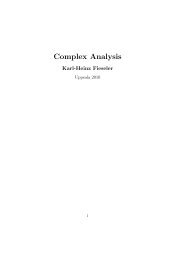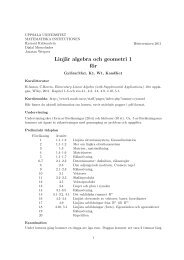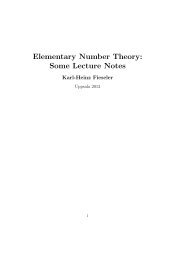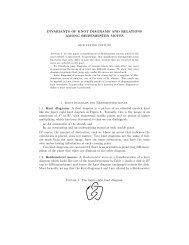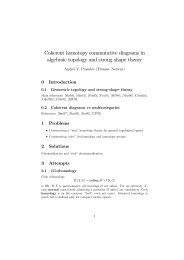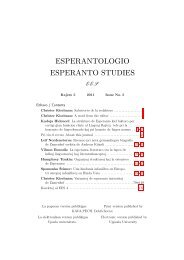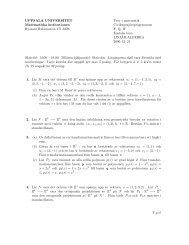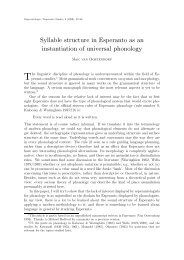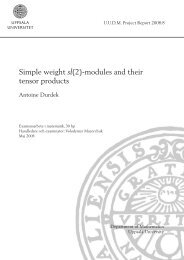Malmsten's Proof of the Integral Theorem
Malmsten's Proof of the Integral Theorem
Malmsten's Proof of the Integral Theorem
- No tags were found...
You also want an ePaper? Increase the reach of your titles
YUMPU automatically turns print PDFs into web optimized ePapers that Google loves.
x = X, y = Y ;and letsx 1 , x 2 , . . . , x n−1be values betweenThen Malmsten constructs <strong>the</strong> sumy 1 , y 2 , . . . , y n−1x 0 and X resp y 0 and Y.S n = (x 1 − x 0 ) · p(x 0 , y 0 ) + (y 1 − y 0 ) · q(x 0 , y 0 )+(x 2 − x 1 ) · p(x 1 , y 1 ) + (y 2 − y 1 ) · q(x 1 , y 1 )+ . . . +With <strong>the</strong> condition+(X − x n−1 ) · p(x n−1 , y n−1 ) + (Y − y n−1 ) · q(x n−1 , y n−1 ).∂p(x, y)dyMalmsten claims that as n → ∞ and <strong>the</strong> differencesdecrease indefinitely,=x 1 − x 0 , x 2 − x 1 , . . . , X − x n−1 ,∂q(x, y), (7)dxy 1 − y 0 , y 2 − y 1 , . . . , Y − y n−1(8)lim S n =∫ Xx 0p(x, Y )dx +∫ Yy 0q(x 0 , y)dy,=∫ Xx 0p(x, y 0 )dx +∫ Yy 0q(X, y)dy,i.e lim S n is independent <strong>of</strong> n as well as <strong>of</strong> <strong>the</strong> choice <strong>of</strong> <strong>the</strong> values in (8).In short, <strong>the</strong> last expression says that <strong>the</strong> limit <strong>of</strong> any sequence, following<strong>the</strong> conditions described above, is equal to <strong>the</strong> integrations along two specificpaths, i.e. from one corner <strong>of</strong> a rectangle to <strong>the</strong> opposite via <strong>the</strong> contours(clockwise respectively counter clockwise).Malmstens approach is to treat <strong>the</strong> terms <strong>of</strong> <strong>the</strong> sum S n by replacing<strong>the</strong>m with approximate integrals and error terms. This new sum has <strong>the</strong>15




